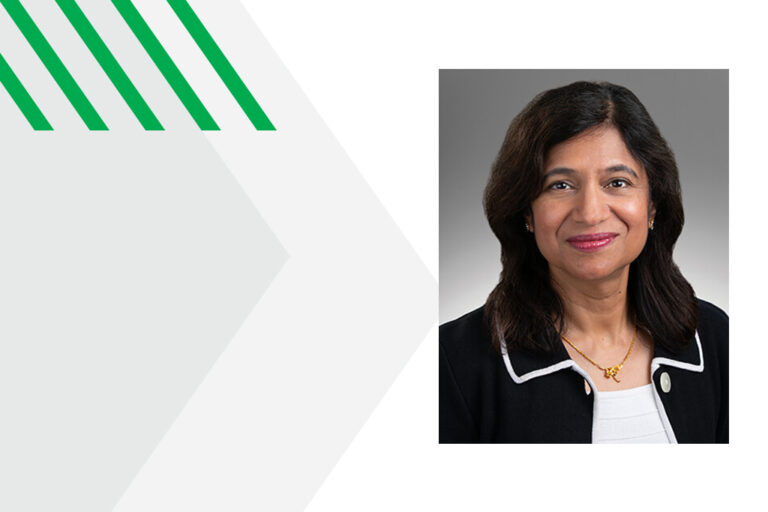Teaching, Learning, and Scholarship team launches SMHS Media Recording Studio
The UND School of Medicine and Health Sciences TLAS Media Recording Studio is now ready for use!
A group of faculty, staff, and SMHS leadership have been working for more than a year to create a technology space where faculty and staff can create high-quality media to support their teaching. The idea for the space grew out of a project that Dr. Jon Allen and Stephanie Flyger built a few years ago.
“They saw a need for more training around core physical exam skills in the MD program,” said Dr. Richard Van Eck, associate dean for Teaching and Learning and the director of TLAS. “They created high-quality, professional video demonstrations with multiple camera angles, text overlays, and great lighting and sound, and we were blown away.”
Students loved the videos as well and asked for more resources like them. The problem? Making the videos was a time-intensive task that required specialized skills. Flyger had previously worked for the UND television studio, Studio One, so she knew how to set up lighting and sound, how to create storyboards, and how to use editing software to assemble the final product.
“When Stephanie left for another position, our first thought was to hire a media specialist who could do this kind of work,” added Van Eck, “but then we realized that it might be possible to create a space that was already set up with preconfigured lighting and technology to allow a single person to create a video with minimal setup and editing required.”
And that was just the beginning.
“Everyone we talked to about this was enthusiastic about it,” said Dr. Adrienne Salentiny, TLAS director of Instructional Design and Technology, “but those conversations always branched out to other needed technology like lecture capture, podcasting, and virtual reality.” TLAS convened a group of faculty, staff, and leadership to begin planning for such a space. In addition to Van Eck and Salentiny, a group of SMHS faculty and staff met monthly to identify the location, equipment, and infrastructure needed for the space.
“Once we had a good sense of what we thought we needed, we took it to the SMHS faculty and staff through a TLAS information session,” said Salentiny. “We shared our ideas for potential equipment and software and listened to their suggestions about what they needed.”
Most of what had been proposed previously was positively received, but there were some new ideas as well.
“We heard from the Department of Biomedical Sciences that they needed to be able to create training and instructional assets, like videos of mouse-tail injections or inside the biohazard space, so they needed portable technology they could bring into the lab,” said Van Eck. This need led to the purchase of portable “light boxes”: square hoods in which objects can be placed to be filmed and lit evenly to create media assets.
The group also received suggestions for technology solutions from other programs, including the Department of Sports Medicine’s Makoto Tsuchiya, who recommended the addition of Logitech’s Meevo camera system. “The Meevo is a multi-camera system like those used by video-blogger chefs on YouTube,” said Andrea Guthridge, instructional designer for TLAS. “You can position multiple cameras for different angles and perspectives and, with the touch of a button on your phone or iPad, switch camera views as you move around. The result is one continuous video with seamless camera switching as if you had a professional producer in the studio with you.”
With the intervention of the pandemic, planning for the studio also evolved to include technology for building online learning resources.
“One thing we learned from the pandemic is that it is easier to teach remotely than we thought,” said Van Eck. “We also learned that to do so well requires more skills and more resources than we had at the time. There is no going back to the old way of teaching—remote and asynchronous (online) teaching is here to stay.”
All of this is why the studio, in addition to the video recording setup that can also be used to film simple interviews or panel discussions, includes a lecture recording setup with lighting, audio, and backdrops; a green screen for filming against any background image you want (think of a giant image of a cell or slide image on which the instructor can point out features during a talk); a high-end Mac studio computer for additional audio and video editing as well as podcasting; and a VR camera that can shoot a 360-degree image of a room that can then be made interactive for students to get a “tour” of a virtual space.
“We also have a variety of other software for building interactive learning modules like tutorials or ‘choose-your-own-adventure-style’ modules such as a virtual lab where you can practice setting up your bench or monitoring and responding to medical science laboratory testing,” said Guthridge.
The equipment is configured for ease of use, so faculty and staff need not be technology experts to get started. The studio is in room E153 and is located in the hallway within the Simulation Center’s clinical wing in the main SMHS building in Grand Forks. The space is available for use by all SMHS faculty and staff.
To set up a consultation or to reserve the studio, please contact Andrea Guthridge (andrea.guthridge@UND.edu).



